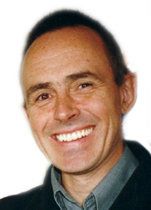Workshop on
Readability and Multilingualism
| Important dates: Workshop: 28 October 2010 (15.15-17.15) |
||
| Workshop registration at the SLTC home page. |
THEME AND INTENDED AUDIENCEToday, Sweden is a multilingual country with more than 150 spoken languages. In addition to that, a considerable proportion of the population is affected by more or less severe language disorders, preventing them from using ordinary Swedish as their primary mode of communication. Information, news and literature must be made readable and comprehensible to these heterogeneous groups of people. The goal of this workshop is to present and discuss issues concerning readability and accessibility in Swedish multilingual settings. The practices of multilingualism will be viewed both from a national and a fuctional perspective. The intended audience of this workshop may be researchers, educators and other practitioners within the field of language technology directed towards education, assistive technologies, multilingual documentation and information retrieval.
Central questions to discuss are the following:
Topics of interest:For this workshop we invite submissions including, but not limited to:
REGISTRATION AND SUBMISSIONSRegistration for workshop participation at the SLTC home page.
INVITED SPEAKERTorbjørn Nordgård, CEO at LingIT, Trondheim, Norway.
| |||||||||||||||||||||||||||||||||||||||||||||||||||||||||
| Speakers and abstracts | ||
|---|---|---|
| Workshop Language (Scandinavian) | ||
| Time | Speaker | Title |
| 15.15-15.20 | Organizers | Introduction |
| 15.20-16.00 | Torbjørn Nordgård | Assistive Language Technology |
| Assistive Language Technology Torbjørn Nordgård, CEO at LingIT AS, Trondheim, Norway. Assistive language technology is widely used among dyslectics and visually impaired people in Norway, for instance specially designed spell checkers, word prediction software and speech synthesis. Interestingly, we have observed that immigrants also show an increasing interest in these solutions. Although the basic methods and techniques are well known, there are certain language specific pitfalls to be aware of. Most solutions work well for English, but spelling conventions and properties of the language in question are often serious obstacles to high quality products. In some cases alleged assistive programs can lead to quite serious spelling mistakes in languages like Norwegian, Danish and Swedish. In the talk I will describe properties of the technologies available for dyslectics and suggest improvements and additions. In the meantime I would like to recommend http://scribe.googlelabs.com as an excellent example of one of the technologies I will discuss. | ||
| 16.00-16.30 | Mats Lundälv | Multilingual and Multimodal Language Resources – In the Context of the Concept Coding Framework and the ÆGIS Project |
| Multilingual and Multimodal Language Resources – In the Context of the Concept Coding Framework and the ÆGIS Project Mats Lundälv - DART: Centre for Augmentative and Alternative Communication (AAC) and Assistive Technology (AT), reg.hab., Drottning Silvias barn- och ungdomssjukhus, Sahlgrenska universitetssjukhuset, Göteborg. A long term effort to build a Concept Coding Framework (CCF) technology to provide a solid structure for the management and maintenance of multimodal and multilingual resources for people in need of Augmentative and Alternative Communication (AAC) has been going on since the European WWAAC project (2001-2004), followed by the Nordic SYMBERED project (2005-2007), and now in connection to the ongoing European ÆGIS project (2008-2012). While the CCF efforts are primarily focusing on graphical symbol support for AAC users, the potential of widely available and standardised resources of this kind should have a much wider interest and potential for basic language support and learning in general. This presentation suggests joint efforts to relatively quickly establish a basic restricted set of ontologies, based on CCF and other free language technologies, suitable for further maintenance and expansion to more languages and modalities, and widely available for providers of products and services in these areas. | ||
| 16.30-17.00 | Katarina Heimann Mühlenbock | Like hunting and not catching - how do we measure text comprehensibility and reading comprehension? |
| Like hunting and not catching - how do we measure text comprehensibility and reading comprehension? Katarina Heimann Mühlenbock, Ph.D. Student in computational linguistics at University of Gothenburg, Graduate School of Language Technology, Göteborg. The readability of a text has to be established from a language-specific perspective, implying that different languages possess more or less accurate and elaborated readability formulae. Readability measures based on several factors on lexical, syntactic and semantic levels contribute strongly to a more correct weighting of text difficulty and appropriateness for different readers. Texts adapted to the specific needs of an individual reader are valuable assets for various types of applications connected to research, education and information, constituting a prerequisite for the integration into society of second language learners, language-impaired persons and beginning readers. | ||
| 17.00-17.15 | Torbjørg Breivik (Language Council of Norway) | Discussion and Summary |
ORGANIZERS
Sofie Johansson Kokkinakis (sofie at svenska.gu.se), Språkbanken, Institute for Swedish as a Second Language, Department of Swedish, University of Gothenburg
Katarina Heimann Mühlenbock (katarina.muhlenbock at svenska.gu.se), Department of Swedish, University of Gothenburg
Rickard Domeij (rickard.domeij at sprakradet.se), Language Council of Sweden, Institute of Language and Folklore
